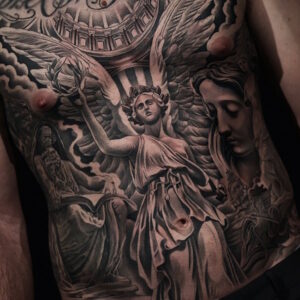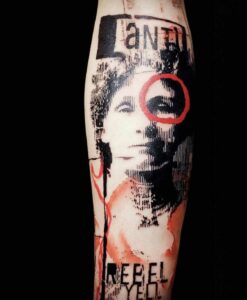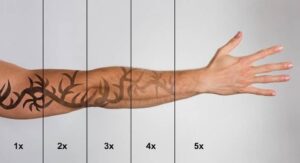In all arts, there are styles which start it all. Styles which give us meaning and foundation, and most of all give purpose to the art itself. In tattooing, one of those styles is definitely blackwork tattoos.
Even though this style has been gaining new popularity in recent years thanks to the power of social media, it’s far from new. If anything, it’s one of the oldest styles out there, along with Japanese and traditional. Ever wondered where all those “tribal” tattoos came from? Well, obviously, from tribes, but what a lot of people fail to recognise is that tribal tattoos are all blackwork tattoos.
No, it’s not a cover up. The Аrt of Blackwork Тattoos.
The “black” in blackwork tattoos does not come from the idea that a large area of skin has to be blacked out, but rather from the materials that were used to tattoo thousands of years ago. Namely, charcoal. Derived from burned wood or bone, carbon has been the primary ingredient of ink for more than 7000 years. And even though black is usually the predominant colour, red would sometimes make an appearance or even be the primary colour.

The origins of blackwork go back millennia, all the way to the indigenous people across the world, and its purposes vary from religious (ritualistic) to personal to social, even magical. The Yupiget women of St. Lawrence Island in the Bering Sea did it to be beautiful and to distinguish themselves from the men more. Furthermore, they did it as an offering to their gods, a ritual of appeasing. The warriors of many Asian and African tribes did (and some still do) it to symbolise their victories in battle and even as an initiation into manhood. In another part of the world, the Ta Moko of the Maori people represents their status in the tribe. The list goes on.
Blackwork tattoos return, rediscovered and reinvented.
The revival of the style has brought machines into play. Yet, to this day there are artists near and far who still tattoo the traditional way. They use manual tools, hammers and needles, and natural black (or red).

Either hand-tapped, hand-poked, skin-cut or skin-stitched, traditional blackwork tattoos are slow, laborious, painful, but always worth the while. As for rules and traditions in the style, blackwork scholar Marisa Kakoulas says [in her book Black Tattoo Art 2: Expressions of the Tribal]: “Everything is possible, everything is allowed: black lines, dots, plains, hand-poked or tattooed by machine. The creative scope is unlimited. Gorgeous traditional Tribals, elaborated patterns and figurative designs, to the point of completely free and unconventionally tattooed layouts.”
From the Tunniit (Inuit tattooing) to the Buddhist masters of Thailand, blackwork has been an intrinsic part of many a culture. And the renaissance that we are now witnessing shows that it is here to stay.

If you love blackwork then you’ll probably love our other article featuring – Strong & Bold Blackwork Tattoo Art








